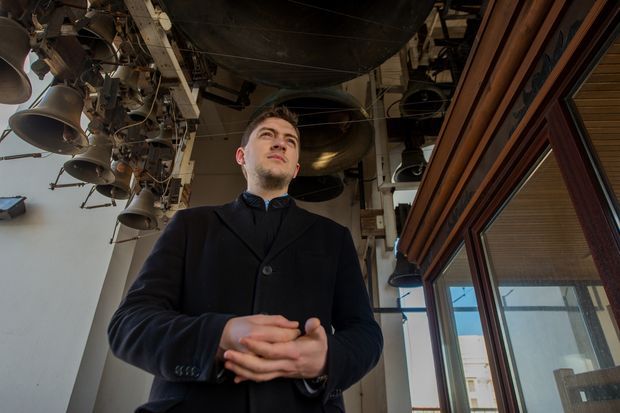“Maidan Oral History”
The Ukrainian Institute of National Memory prepares an audio archive of eyewitness evidence. Out of 230 recordings, only one is from an anti-Maidan person
To mark the Euromaidan’s first anniversary, the Ukrainian Institute of National Memory is launching a project, “Maidan Oral History,” that consists of audio and video interviews with activists. According to the organizers, the recordings will form the basis of the Maidan’s archive and serve as a source base for historians, documentary film directors, sociologists, psychologists, and others. In the future, the materials will be accessible to the general public and used as exhibits at the Museum of Freedom/Museum of Maidan. As of today, 144 audio and 86 video interviews have been taped in the reminiscences genre. The project is being carried out in partnership with the Foundation to Preserve the Memory of Maidan founded by a Dutchman, Robert van Voren. The foundation engaged in this project Natalia Mashtaler, a Ukrainian documentary film director, who began to make the film as long ago as late February.
“At first, the foundation and the institute were filming separately,” Tetiana PRYVALKO, a research associate at the Ukrainian Institute of National Memory (UINM), comments to The Day. “We went to the Maidan immediately after the police shooting and audio-recorded – in two months’ time – 144 pieces of eyewitness evidence which we have already transcribed. Those interviews were specific in that we could contact with self-defense people, i.e., the fighters who lived in tents, represented different regions, suffered, lost their friends, and went through the Maidan’s most horrible moments. In the mid-summer we began to cooperate with the foundation and got an opportunity to record video interviews. In this case we met all kinds of representatives – self-defense, the Maidan’s civic sector, SOS Euromaidan, volunteers, the art hundred, and just the public. As the most active self-defense fighters are now engaged in the counter-terrorism operation and volunteer work, it is very difficult to invite them now to visit us. For this reason, we are enlarging the category of eyewitnesses – they are mostly those who are in Kyiv now.”
“Another specialty of this project is interviews by representatives of different churches,” Ms. Pryvalko continues. “We visited St. Michael’s Golden-Domed Cathedral, and we have a video with the well-known bell-ringer and hegumen Ivan Sydor who organized settlement of the first protesters who sought refuge at this cathedral. We have interviews with representatives of the Roman and Greek Catholic churches, recently recorded an interview with the Supreme Archbishop Liubomyr Huzar, a member of the pressure group “December the First.” He told us how this group attempted to settle the conflict between the government and the protesters and what issues were then discussed at roundtables.”
The organizers say interviews were conducted on the basis of a standard questionnaire so that the answers could be compared later. The questions were about what caused the people to go out on the Maidan, when one began to take an active part in the events, what was etched on the memory, which events one considered to be the most important, and in which of them s/he personally took part. If one represented a concrete organization, s/he was asked to tell about its structure, date of foundation, and functions. And some generalized questions, such as what they think of the Maidan, what it means to them, what are the Maidan’s symbols, whom they consider its heroes, and in what way the Maidan should be remembered.
“We’ve been also trying to find anti-Maidan people,” the UINM researcher says. “We have one recording of an opponent, Halyna Zaporozhtseva, chairperson of the NGO Mothers of Ukraine. We accept these stories without any debates. We only record eyewitness evidence, we do not influence or shape their vision and attitude. We prepare a major historical source.”
The UINM is now inviting all those who wish to do so to take part in the campaign “Write about the most interesting recollection of the Maidan” which will be part of the archive. To take part in the project, you should film a short (up to five minutes long) video interview with a participant of the 2013-14 winter events or record your story, which includes what you consider the most interesting recollection of the Maidan, and send it to the institute before December 19.
The ultimate goal is an electronic archive with free access to researchers and documentary film directors. Every archival material will be stored in two copies – one at the Ukrainian Institute of National Memory and the other at the Foundation to Preserve the History of Maidan, i.e., physically in Munich so that European researchers and film directors also have access to this evidence. The UINM also plans to establish cooperation with the Ivan Honchar Museum, Kyiv Borys Hrinchenko University, and the National University of Kyiv Mohyla Academy, which also recorded the Maidan protesters’ evidence, for the project “Maidan Oral History.”






